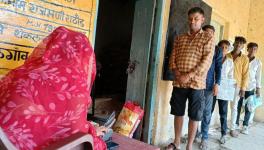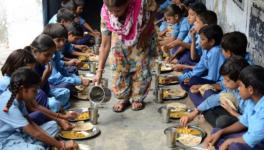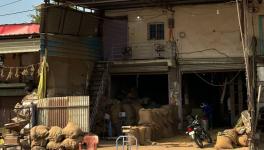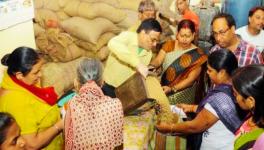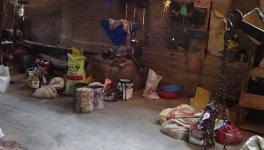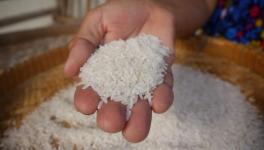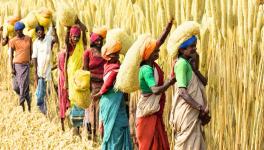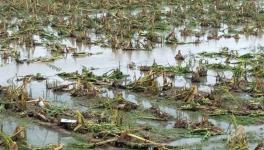Activists Object to Distribution of Fortified Rice Through PDS
Synthetic fortification of rice is not proven to be effective and can be toxic to many Indians, according to a report prepared by the Right to Food Campaign. The report was released following a three-day fact-finding visit to Jharkhand by the Right To Food Campaign (RTFC) and Alliance for Sustainable and Holistic Agriculture (ASHA). The activists have urged the Jharkhand government to stop the distribution of fortified rice in the state immediately.
Prime Minister Narendra Modi revealed the ambitious plans of the Government of India to supply fortified rice in all food schemes of India by 2024 in his Independence Day speech in 2021. Earlier in 2019, the Union government had initiated a pilot scheme for "Fortification of Rice and its Distribution under Public Distribution System" for three years, with an outlay of Rs 174.64 crore, and this scheme was expected to unfold in 15 districts of 15 states until March 2022.
One of the stated objectives of this pilot scheme was “to evaluate the provision, coverage and Utilisation of Fortified Rice by the target population as well as the efficiency/effectiveness of the consumption of fortified rice in reducing the targeted micronutrient deficiencies in different age and gender groups.”
WHAT IS RICE FORTIFICATION?
The Food Safety and Standards Authority of India (FSSAI) defines rice fortification as the process of increasing essential micronutrients in rice so as to improve the nutritional quality of the food supply and provide a public health benefit with minimal risk to health. India is a leading rice-producing country, with 22% of the total global rice production. 65% of India's population consumes rice on a daily basis – the per capita rice consumption in India is 6.8 kg per month. Rice is, therefore, a large source of calories and a core component of agriculture and nutrition in most of India, though it is low in micronutrients.
"Milling of rice removes the fat and micronutrient-rich bran layers to produce the commonly consumed starch white rice while polishing further removes 75-90% of vit. B1, vit. B6, vit. E and Niacin. Fortifying rice provides an opportunity to add back the lost micronutrients but to also add others such as iron, zinc, folic acid, vit. B12 and vit. A," FSSAI explained in a document on rice fortification.
In India, rice is fortified using extrusion technology. In this technology, milled rice is pulverised and mixed with a premix containing vitamins and minerals. Fortified rice kernels (FRK) are produced from this mixture using an extruder machine. FRK is added to traditional rice in a ratio ranging from 1:50 to 1: 200. As per guidelines issued by the Ministry of Consumer Affairs, Food and Public Distribution, the shape and size of the fortified rice kernel should “resemble the normal milled rice as closely as possible.” According to the guidelines, the length and breadth of the grain should be 5 mm and 2.2 mm respectively.
According to FSSAI norms, 1 kg of fortified rice will contain the following: iron (28 mg-42.5 mg), folic acid (75-125 microgram), and vitamin B-12 (0.75-1.25 microgram). Rice may also be fortified with zinc (10 mg-15 mg), vitamin A (500-750 microgram RE), vitamin B-1 (1 mg-1.5 mg), vitamin B-2 (1.25 mg-1.75 mg), vitamin B-3 (12.5 mg-20 mg) and vitamin B-6 (1.5 mg-2.5 mg) per kg.
At the time of PM Modi's announcement last year, nearly 2,700 rice mills had installed blending units for the production of fortified rice, and India's blending capacity stood at 13.67 lakh tonnes in 14 key states, according to figures provided by the Ministry. FRK production had increased rapidly from 7,250 tonnes to 60,000 tonnes within two years.
WHY ARE ACTIVISTS OBJECTING?
"Even as the Pilot Scheme is underway, without really taking off as per plan, fortified rice distribution has been scaled up to 257 districts of India in fifteen states by April 2022, covering more than 1.1 crore beneficiaries," the report by RTFC and ASHA said. It is reported that the Food Corporation of India (FCI) and other state agencies have already procured around 88.65 Lakh Metric Tonnes of Fortified Rice for supply and distribution.
Within this, approximately 4.3 Lakh Metric Tonnes have been distributed through PDS in the Pilot Districts. "This then appears to be the primary strategy of the Government to tackle malnutrition in the form of Anaemia in the country," it added.
The report highlighted that there is no consensus that fortification works. "Evidence published in the Cochrane Review in 2019 shows that iron-fortified rice failed to impact anaemia in several countries. Excess iron is known to create oxidative stress, and even small amounts of iron are contraindicated in the case of diseases like Thalassemia, Sickle Cell Anaemia, and acute infections such as Malaria or Tuberculosis," it said.
The number of Indians with such diseases is significant, and most are not even aware that they have such conditions, said the activists. They added, "In this one-size-fits-all solution, fortified rice is being pushed onto unsuspecting citizens who have not given their prior informed consent."
According to experts, when the government aggressively promotes a "singular reductionist corporate-controlled silver bullet solution" like fortified rice, a myriad of diverse local and natural solutions get neglected and even eroded. The diverse local and natural solutions primarily revolve around the enhancement of dietary diversity and providing adequate calories for the affected. The report highlighted that nutrition cannot be approached through a micronutrient by micronutrient formula and needs a holistic approach.
Moreover, it pointed out large scale fortification will lead to irreversible market shifts, with concomitant infrastructure changes in the supply chain. On the other hand, protein-rich diets, millets, healthy fats, traditional kinds of rice that are nutritionally superior, staple grains that are traditionally processed to preserve their nutrients, local (uncultivated) greens, diverse forest foods, and other materials can come from millions of kitchen gardens and other locally-led efforts, will all be neglected by such a policy.
Food fortification is a multi-million-dollar corporate-controlled industry. The report said, "In the government-promoted reductionist approach, profits will be reaped by big MNCs, that too a handful of them, since the global supply of micronutrients for food fortification is an industry controlled by a few mega-corporations. India will have to import these many synthetic vitamins since most are not produced in the country. In this import-dependency approach, in the name of tackling under-nutrition, our food chain will get more corporate-controlled and out of the hands of communities."
The fact-finding team found that there is no information to, or prior consent obtained from, communities which have been recipients of this fortified rice. PDS dealers have not been informed beforehand, nor have village-level frontline workers of various departments made aware of fortified rice.
"It appears as if the Government of India wanted to implement this program quietly if not clandestinely, and that the Government was under the misapprehension that Fortified Rice Kernels (FRK) blended with regular rice will go unnoticed and, therefore, consumed by citizens without any questions," the report said.
The team found that a vast majority of women are picking out and throwing away the FRK added to rice, and this includes women who are cooking for Anganwadi and School meals. Such FRK is clearly identifiable amongst the real rice kernels and is picked out by hand and later during the washing of the rice before cooking.
This fact-finding team has established that they are of the firm view that in a large scale approach to rice fortification like the one being adopted by governments right now, even a screening process prior to fortified rice distribution does not resolve the problem of at-risk individuals because, within a household, it is unlikely that two different kinds of rice (fortified and unfortified) will be cooked for every meal for the contra-indicated cases and healthy persons. It is also unlikely that the government would be able to put into place any mechanisms by which entitlements of each person in a household can be distributed distinctly in the PDS system as fortified and non-fortified rice to cater to individual needs and medical conditions.
"While that is about (lack of) capabilities of the state to deliver in a tailor-made fashion to patients separately from healthy persons in a community, it is also very apparent that most households are deeply dependent on the entitlements that they access from the PDS system. It is clear that avoidance of risk to the vulnerable contra-indicated persons requires the stopping of the supply of fortified rice itself in Jharkhand," the report said.
Get the latest reports & analysis with people's perspective on Protests, movements & deep analytical videos, discussions of the current affairs in your Telegram app. Subscribe to NewsClick's Telegram channel & get Real-Time updates on stories, as they get published on our website.









